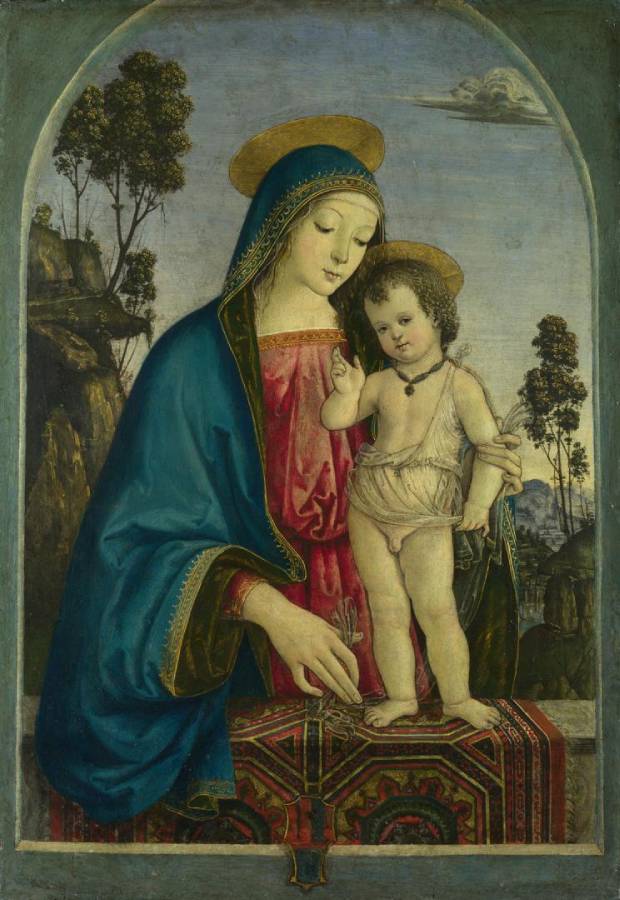Pinturicchio (c.1454-1513)
Madonna col Bambino benedicente (The Virgin and Blessing Child)
c.1480
Tempera on wood, 53.5 x 35.5 cm
National Gallery, London
Presented by Queen Victoria at the Prince Consort’s wish, 1863.
Pintoricchio painted a number of images of the Virgin and Child of a similar size to this one. Their scale, high level of detail and decoration, and the sweetness of the figures made them highly desirable as beautiful objects and as aids for worship in the home.
This one offers a view through an arched stone window into the world of the holy figures – a wild and expansive landscape of rocky precipices, slender trees and a distant mountain range. Christ is supported by his mother, who bows her head towards him as she delicately grasps his elbow. As a painting made for worship within the household, this was not only an object of devotion but also an example of ideal motherhood and womanhood. The Virgin’s gentle downcast gaze is a sign of her modesty and humility, essential virtues for any Renaissance woman.
The Christ Child, on the other hand, looks directly at the viewer, signalling to them that they must pay attention to his gestures. With one hand he lifts his robes to reveal his genitals – a sign of his true humanity – proof that he was a child just like those of the woman who would pray before this image. With his other hand, he makes a blessing gesture – a reminder that despite his humanity he had divine authority from God.
Christ stands on a woven rug; luxury items in the Renaissance, they were never placed on the floor but used as decoration for tables, for example. It is included to show the status of the Virgin and Child but probably also to enrich the decoration of the patron’s home, standing in for the real thing. Although Pintoricchio and his studio produced many works like this, the patrons of this image clearly asked him to personalise it for them by including their coat of arms. As it pokes over the window ledge, it broaches the divide between our world and that of the holy figures. Unfortunately, we do not know to which family these arms belong.
The painting was cut down at the top before it joined our collection – the arch would have continued at the top. Parts of the image were also repainted before the National Gallery acquired it. (NG)
